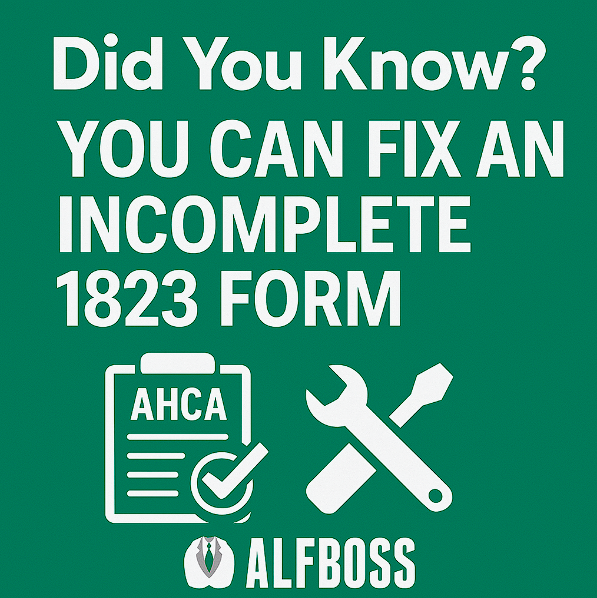
Did You Know You Can Fix an Incomplete 1823 Form?
Let me ask you something — have you ever had a resident show up with a half-filled 1823?
Maybe it’s missing a few boxes.
Maybe the practitioner forgot to check whether the resident needs assistance with ADLs.
Or worse — they skipped entire sections.
If you’ve ever been stuck thinking, “Now I have to send this back and wait,” you’re not alone. But here’s something most ALF operators don’t realize:
👉 You can fix it.
The Rule That Makes It Clear
It’s right there in 59A-36.006(2) under “Health Assessment.”
“If AHCA Form 1823 is not completed fully, the omitted items may be obtained by the administrator or designee either orally or in writing from the health care practitioner.”
Let me break that down…
✅ You’re Allowed to Follow Up on Incomplete Items
If something’s missing — and let’s be real, it often is — you can call or email the health care provider and get the missing information.
You don’t have to reject the resident.
You don’t have to delay admission.
You just have to follow up and document.
That means:
- You can ask the practitioner directly, as long as it’s within 30 days of admission
- You can collect the info orally (yes, even over the phone!)
- You need to record the practitioner’s name, your name and signature, and the date
🗂️ What You Should Put in the Resident File
If you get the missing information orally, your documentation should look something like this:
“Per Dr. Smith (via phone on 7/10/2024), the resident requires assistance with bathing and dressing. Recorded by J. Torres, Administrator.”
Then sign it, date it, and file it with the 1823.
This is completely compliant — and can save you a ton of stress trying to track down a new form or chase busy practitioners for a rewrite.
⚠️ What You Can’t Do
This doesn’t mean you can fill in the blanks yourself or guess what the answers should be.
You still need to get the info directly from the licensed health care practitioner — either verbally or in writing.
And if they didn’t do the initial evaluation or if the resident’s condition changed, that’s when you do need a new form.
Final Thought
In a perfect world, every 1823 would be filled out completely, clearly, and correctly. But in the real world, that’s not always the case — and thankfully, the rule allows for that.
So next time a form comes in missing a few pieces, don’t panic. Just pick up the phone, get the info, and document it the right way.
If you’re ever unsure what’s okay to fix and what’s not, reach out. Happy to help you stay compliant without making more work for yourself.